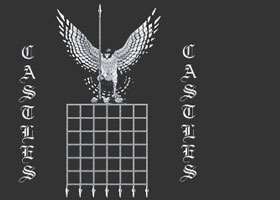"Then the Normans determined to shoot their arrows upward into the air, so that they might fall on their enemies' heads and strike their faces. The archers adopted this scheme and shot up into the air toward the English; and the arrows, in falling, struck their heads and faces and put out the eyes of many; and all feared to open their eyes or leave their faces unguarded. King Harold has been shot with an arrow just above his eye which has put it out and many other English soldiers have suffered a similar fate due to the strategy of the Norman archers."
Duke William won the battle and conquered the English - this was mainly due to the Norman's use of the Bow and arrow Medieval Short Bow and ArrowMedieval Bow and Arrow - History of the Medieval Short Bow and Arrow in warfare
- Facts and information about the Medieval Short Bow and Arrow
- The Archery Law in England
- Description of the Medieval Bow and arrow
Medieval Bow and Arrow - The Archery Law 1363
The importance of the archers and their bow and arrow grew in importance. The whole of the English population was involved in Medieval Warfare. In 1252 the 'Assize of Arms' was passed which decreed that every man between the age of 15 to 60 years old were ordered to equip themselves with a bow and arrows. The Plantagenet King Edward III took this further and decreed the Archery Law in 1363 which commanded the obligatory practice of archery on Sundays and holidays! The Archery Law "forbade, on pain of death, all sport that took up time better spent on war training especially archery practise". Henry I later proclaimed that an archer would be absolved of murder, if he killed a man during archery practise! Description of the Medieval Short Bow and Arrow
The bow was constructed in two parts. A strip of flexible material, such as wood, was linked at the two ends with a cord, or string, to form a tension from which is propelled the arrow. Most bows were made from yew but ash, hazel and elm were also used. The string of the bow was made from hemp as it was the strongest and least elastic fibre available. The string was then soaked in glue as some protection against moisture. The arrow was a straight shaft with a sharp point on one end and with feathers attached to the other end. The first arrows were broadhead arrows. But the the large arrow head, after which the broadhead was named, would distribute the impact over a large area and just bounce off or break against armor. Bodkin point arrows were invented to address this issue. Long bodkins were used for piercing mail. Short bodkins were used for piercing armor plate. The range of the new bodkin arrow reached 275 yards. A maker of bows, arrows, and other archery goods was called an Artillator. Medieval Bow and Arrow - The Crossbow and the Longbow
The Bow and Arrow was apparently supplanted by the crossbow and then the longbow. The crossbow range was 350 – 400 yards but could only be shot at a rate of 2 bolts per minute. The crossbow was easy to use, requiring minimal training and required little strength to operate. But it shot too few bolts! The longbow launched arrows faster than any previous bows. A skilled longbowman could release between 10 - 12 arrows per minute - but required considerable training. Medieval Archers
Medieval Archers and foot soldiers were peasants. They wore ordinary clothes which were reinforced with leather patches, strips of metal or quilted cloth. The bow and arrow was a good weapon to shoot from a distance but as the battle drew closer the archers would enter the fray with any weapons they could muster. A dagger at best, a farm implement or home made weapon at worst. Medieval Bow and Arrow
Facts and information about the history of the bow and arrow and how peasants used this weapon! | 
